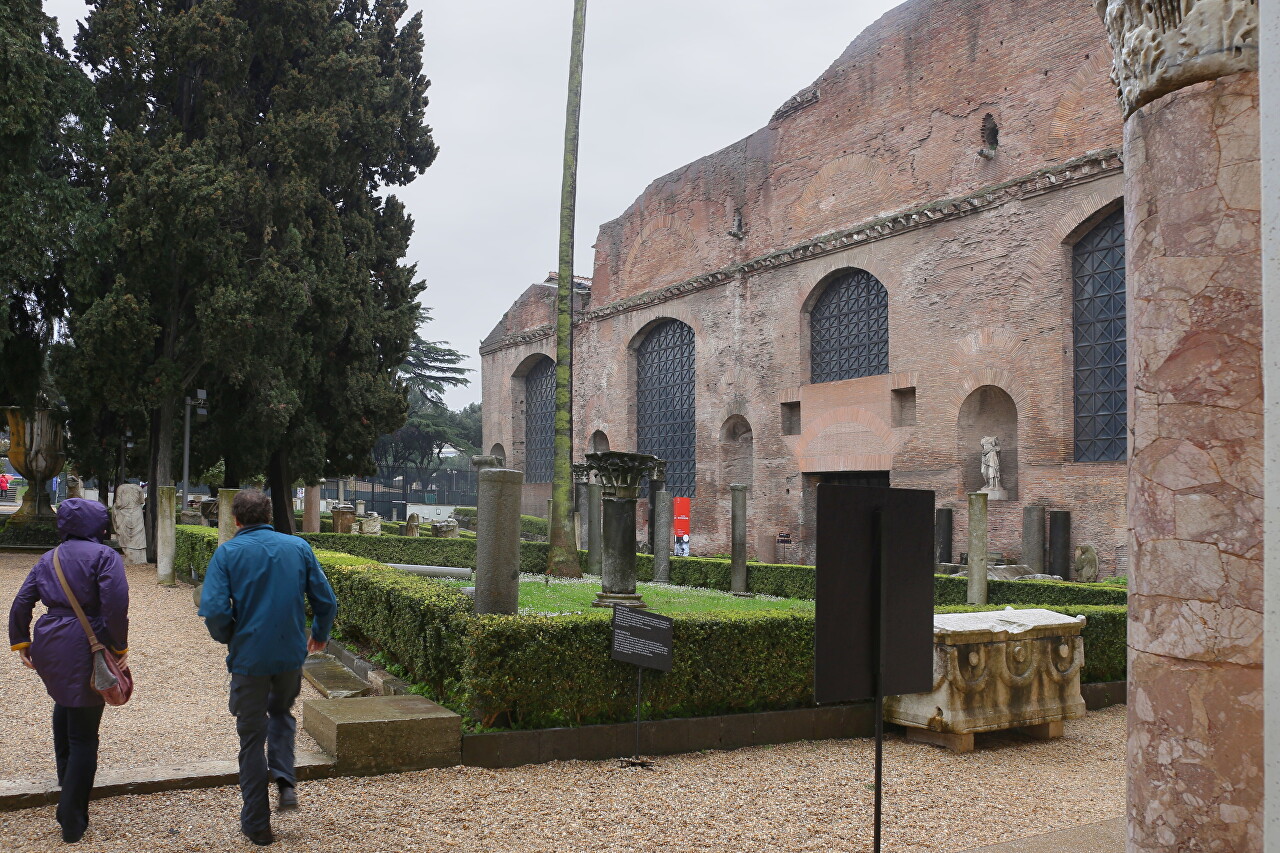The Baths of Diocletian History and Сonstruction
The north-eastern border of the Republic Square (Piazza della Repubblica) is formed by a huge complex of remains of ancient structures that served as public baths.
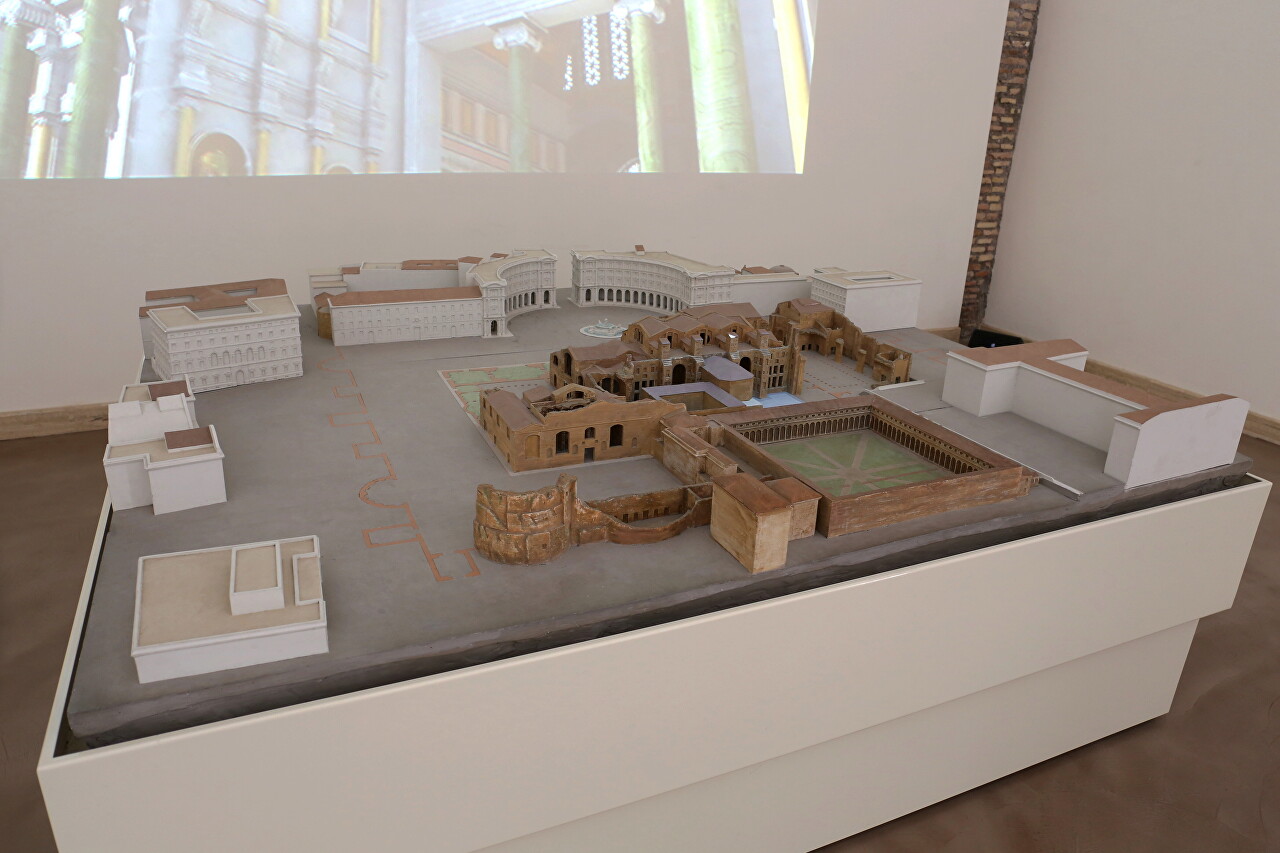
Construction began in 298 by order of Emperor Maximian, but the baths were named after his co-ruler Diocletian (Thermae Diocletiani), who oversaw this project and the bricks had his brand.
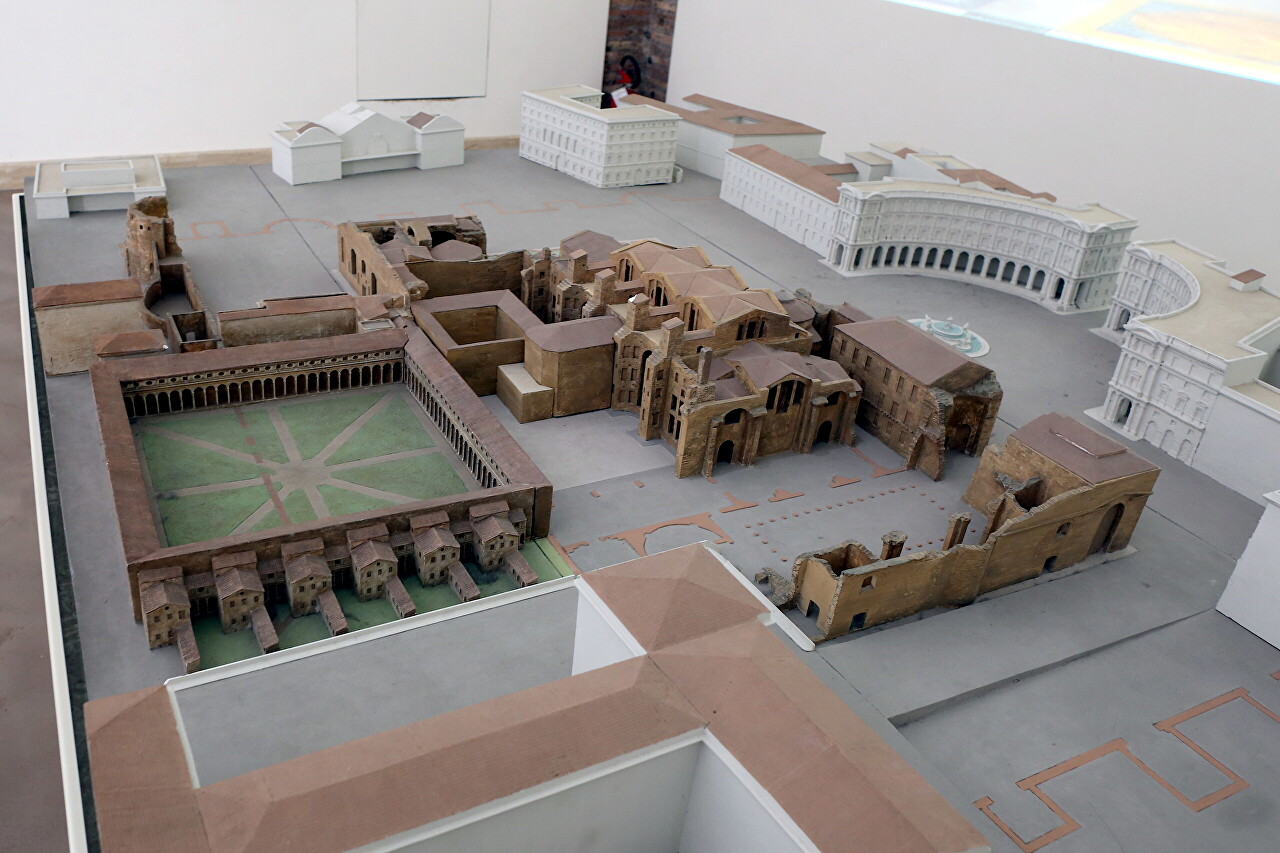
The baths were opened in 306 under the Emperor Constantinus, after the abdication of Diocletian from the throne. These are the largest baths of the imperial era of Rome.
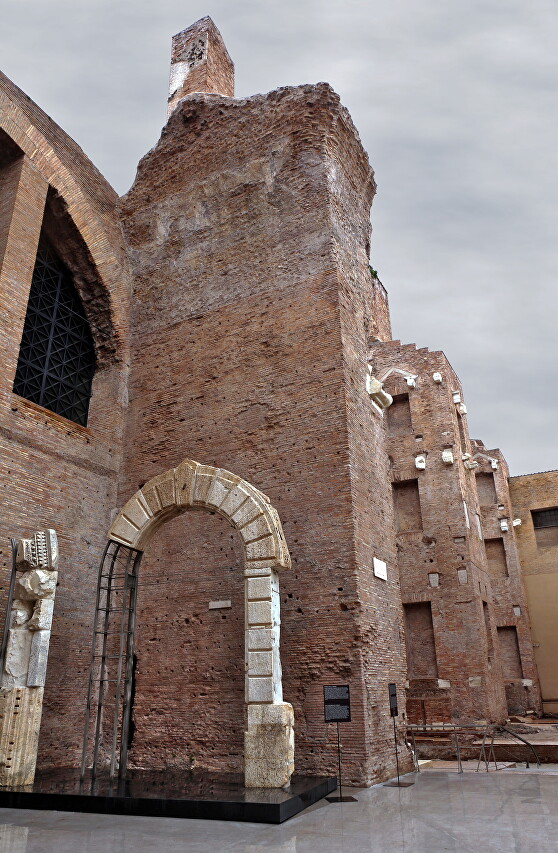
In the Swiss monastery of Einsiedeln, there is evidence of a pilgrim who visited Rome in the 8th or 9th century. He says that above the main entrance there was an inscription that translates from Latin as: "Our Lords Diocletian and Maximian, the elder and invincible Augustus, the fathers of emperors and Caesars, our lords Constantius and Maximian, Severus and Maximus, the most noble Caesars, who dedicated to their beloved Romans these auspicious Baths of Diocletian, which the divine Maximian on his return from Africa, he ordered to build and consecrate in the name of his brother Diocletian, buying the premises necessary for such a huge and wonderful work and finishing them with the most luxurious refinement." Currently, only fragments of this inscription have been preserved.
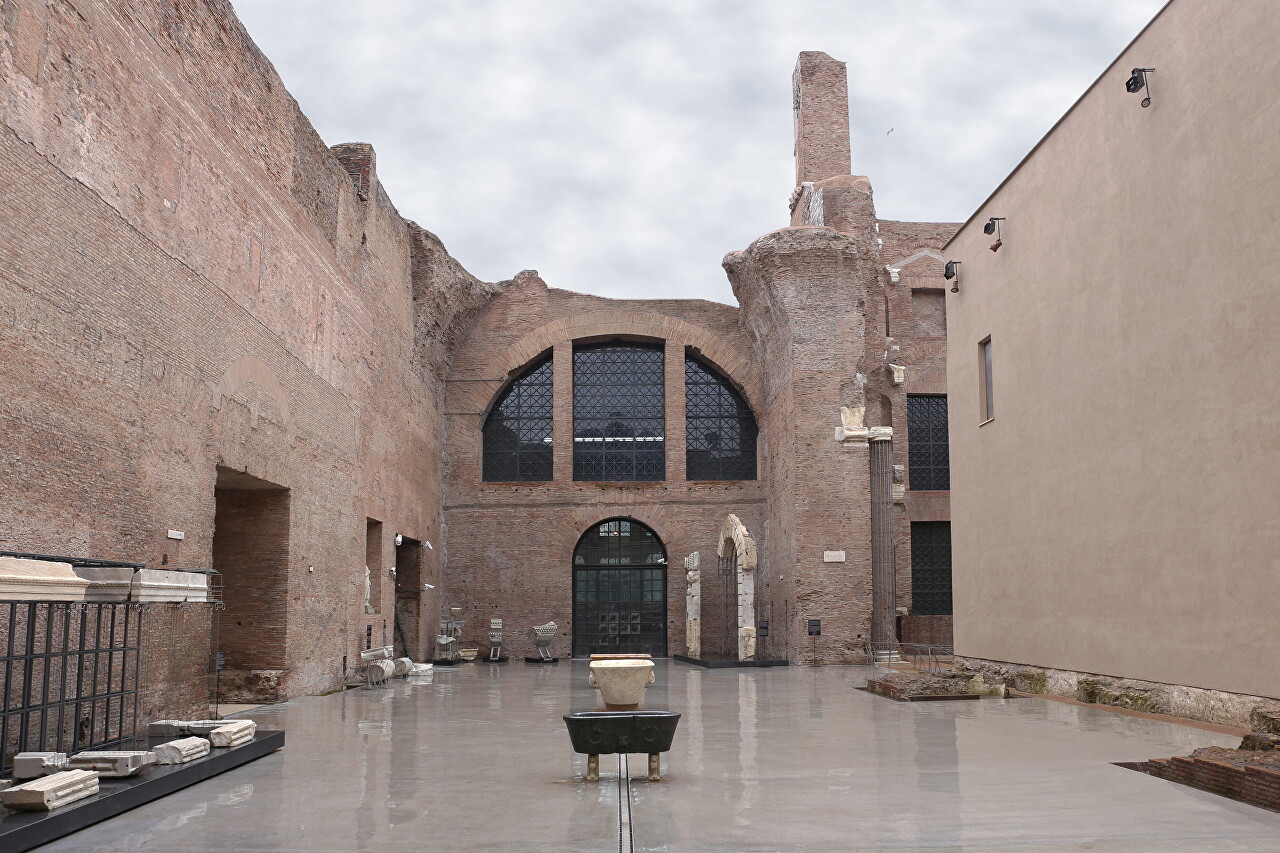
The baths were built on the northeastern summit of Viminal, the smallest of the seven Roman hills, and were intended for residents of the Viminal, Quirinale, and Esquilino neighborhoods.
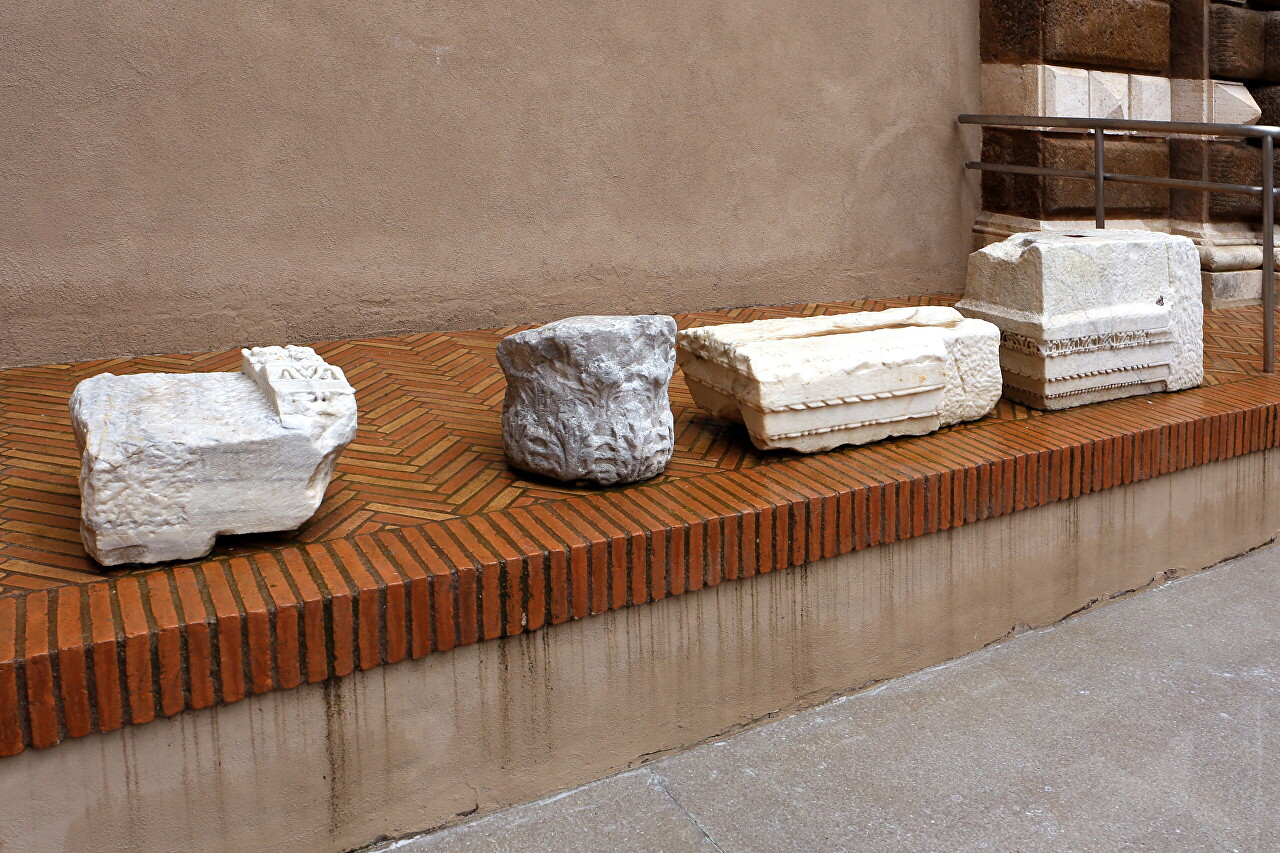
Before the construction of the thermal baths, there were private houses and the temple of Quirinus on this site, which were demolished.
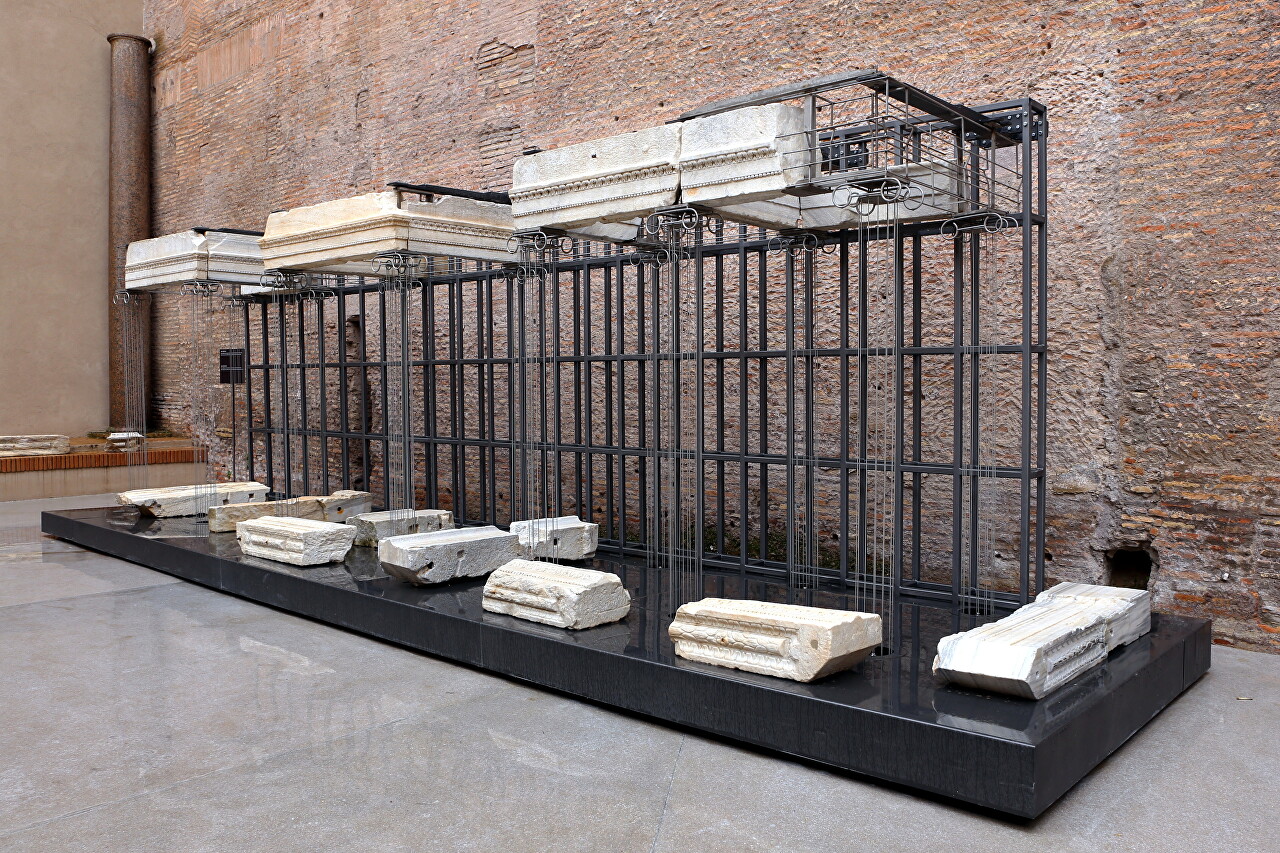
Water was supplied through the Aqua Marcia aqueduct, built in 140 BC and distinguished from other sources by the purest water.
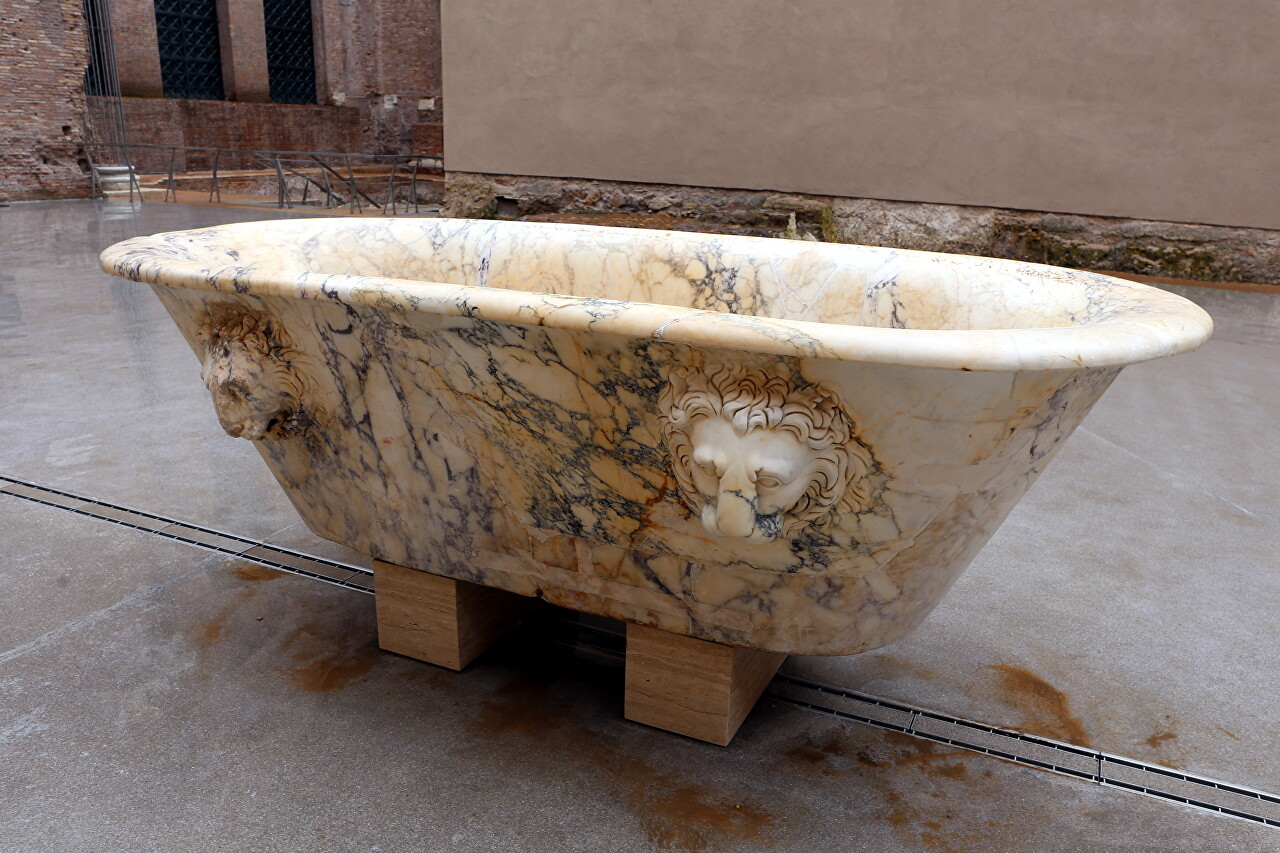
For the normal functioning of the baths, by order of Diocletian, the capacity of the aqueduct was increased.
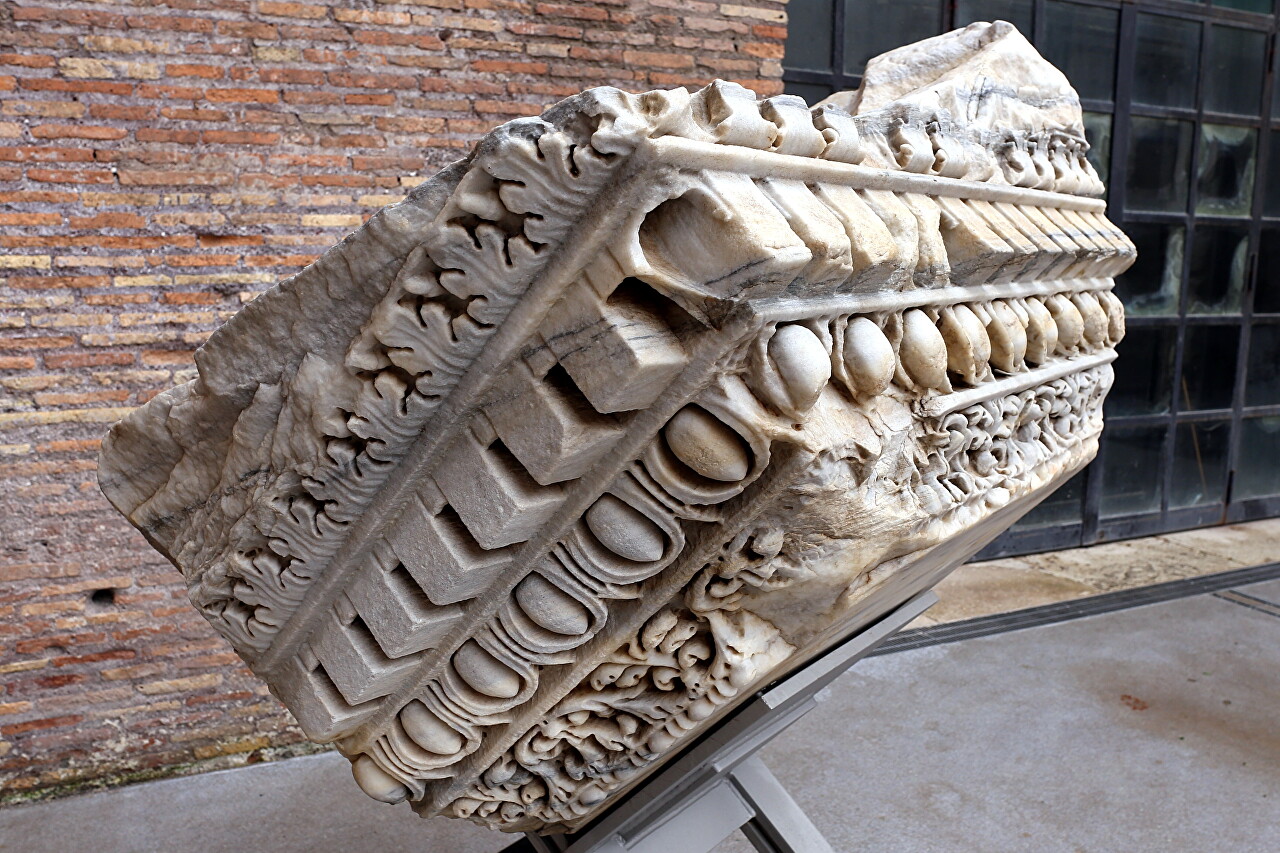
The territory of the bath complex occupied 13 hectares. The main entrance was to the northeast.
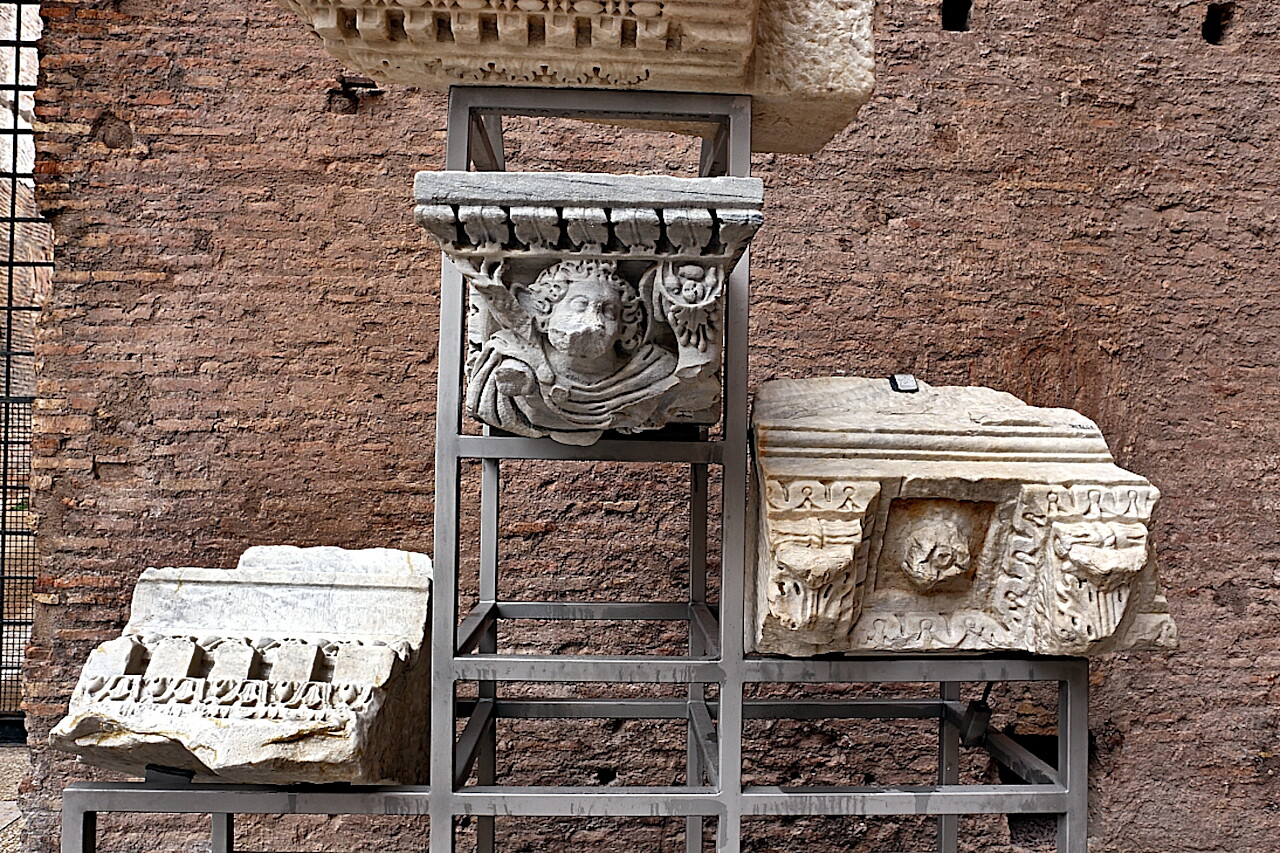
In the south-west, on the territory of the current Republic Square, there were two large buildings, which are supposed to have been public libraries. These, in turn, are connected to circular halls: one of them is now the church of San Bernardo , the other is visible at the beginning of Via del Viminale.
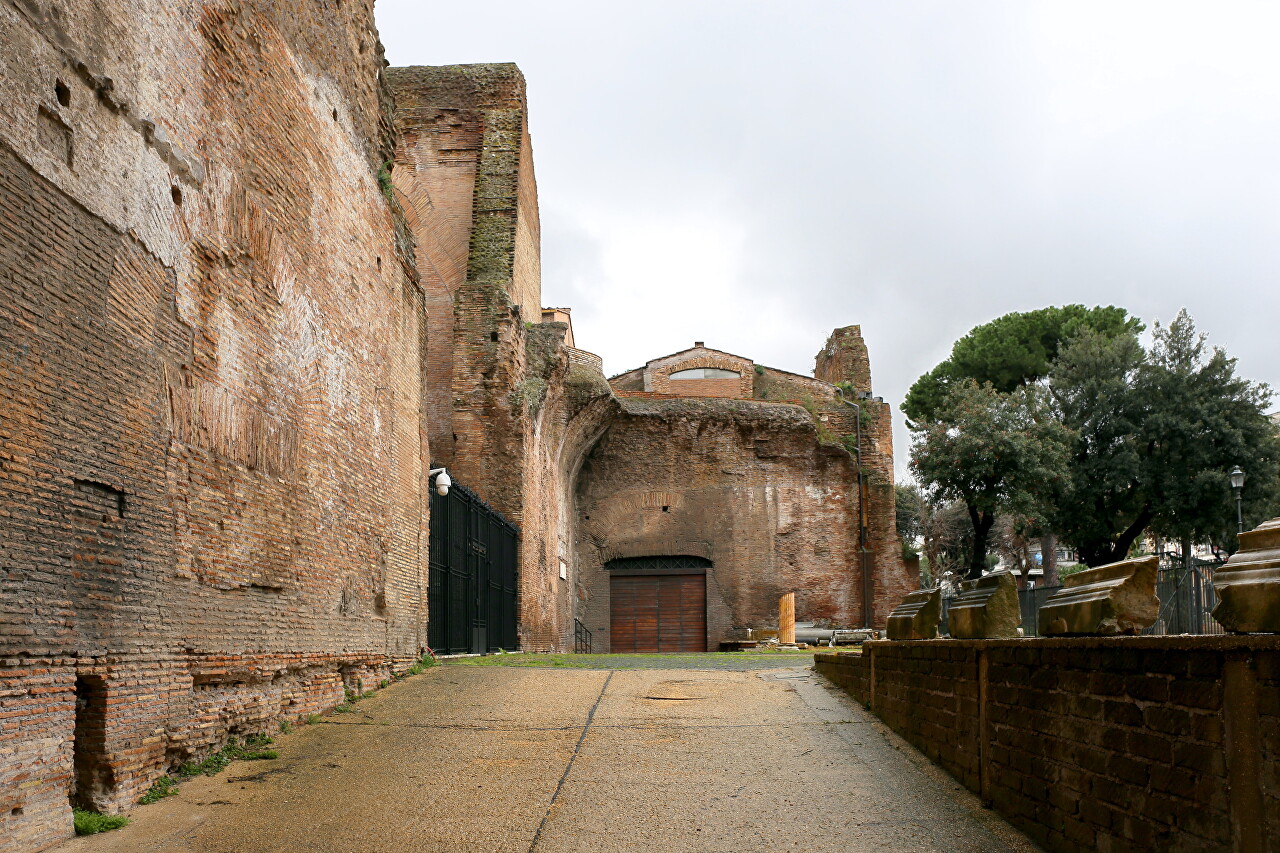
The central block of baths measured 280 by 160 meters (910 by 530 feet).
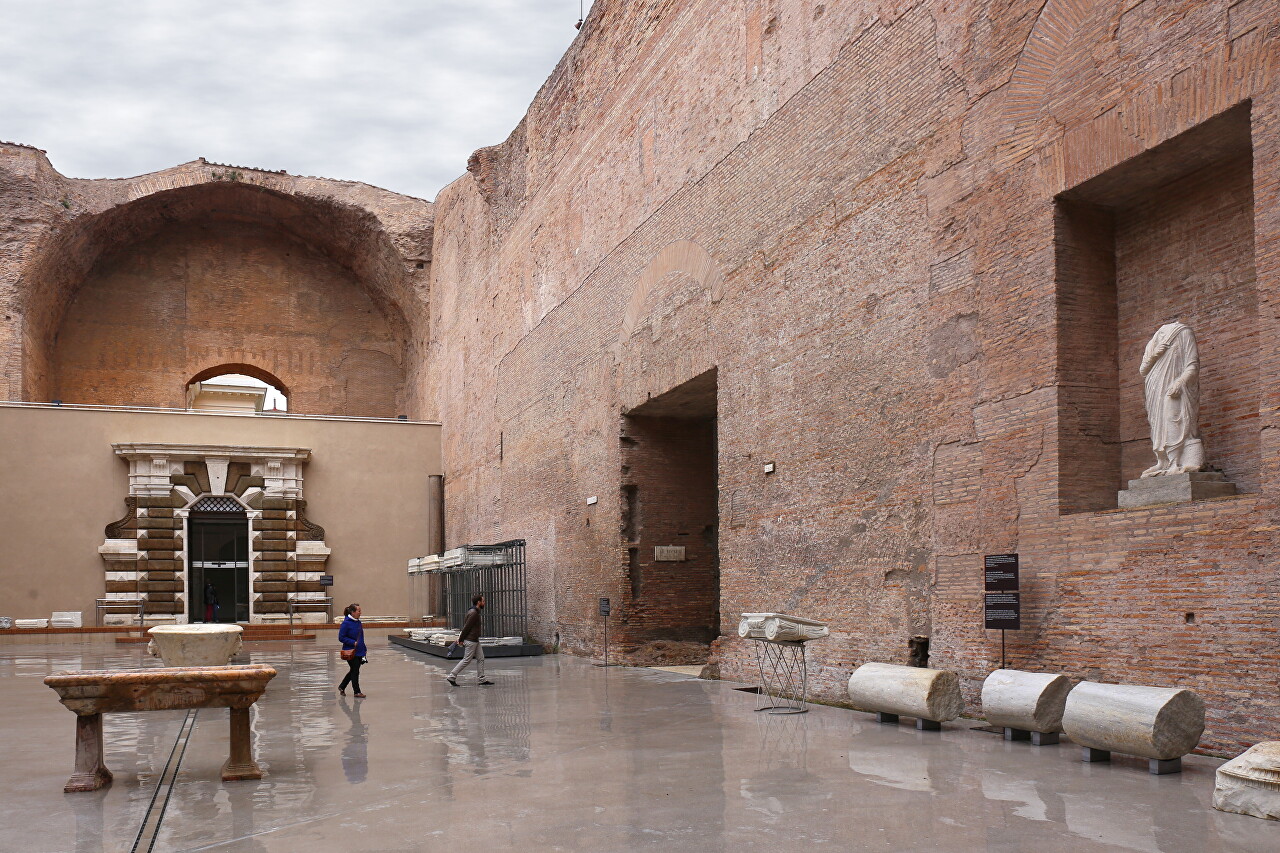
The central block consisted of a frigidarium, tepidarium and caldarium located along a single axis.
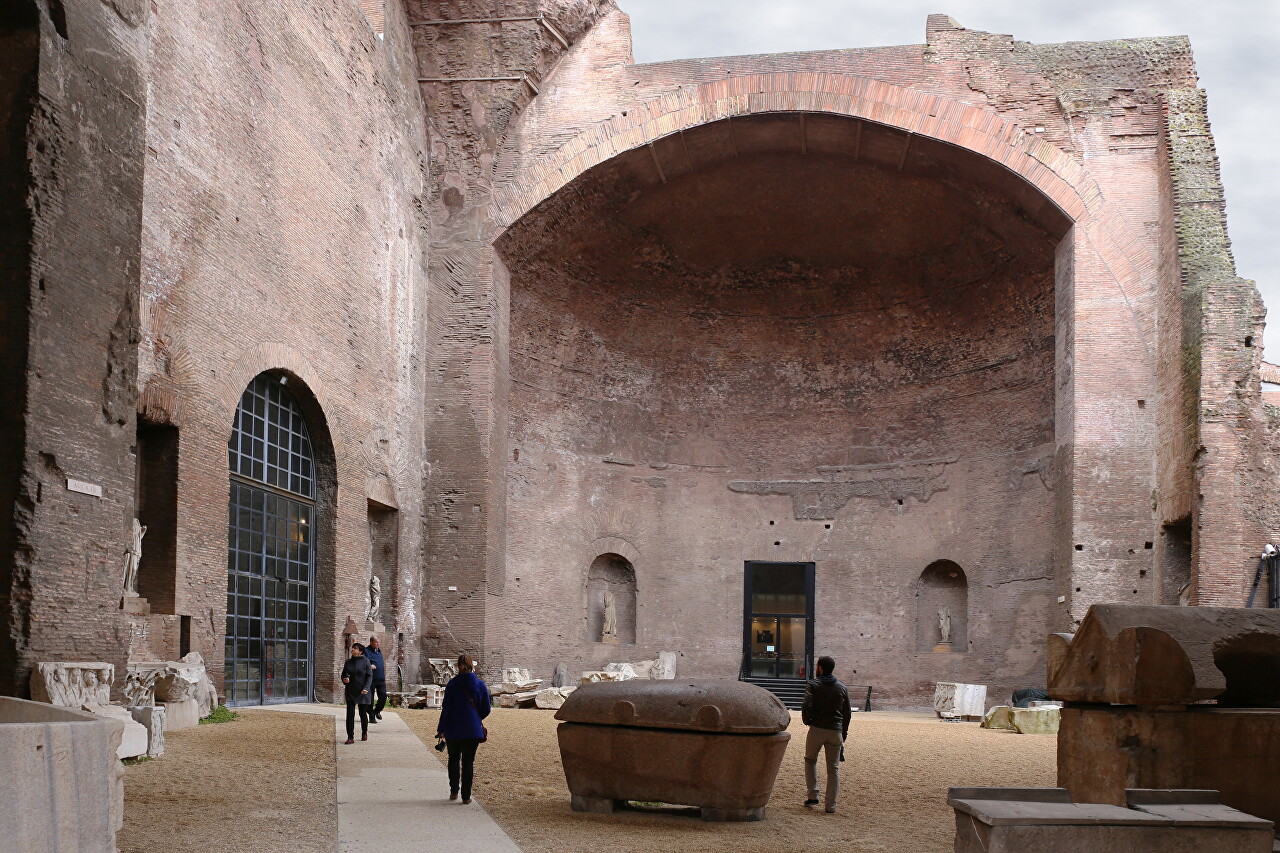
On both sides of the frigidarium, two open-air gyms were located symmetrically, the remains of the western one can now be seen on Via Cernaia. The caldarium was flanked by two octagonal halls.
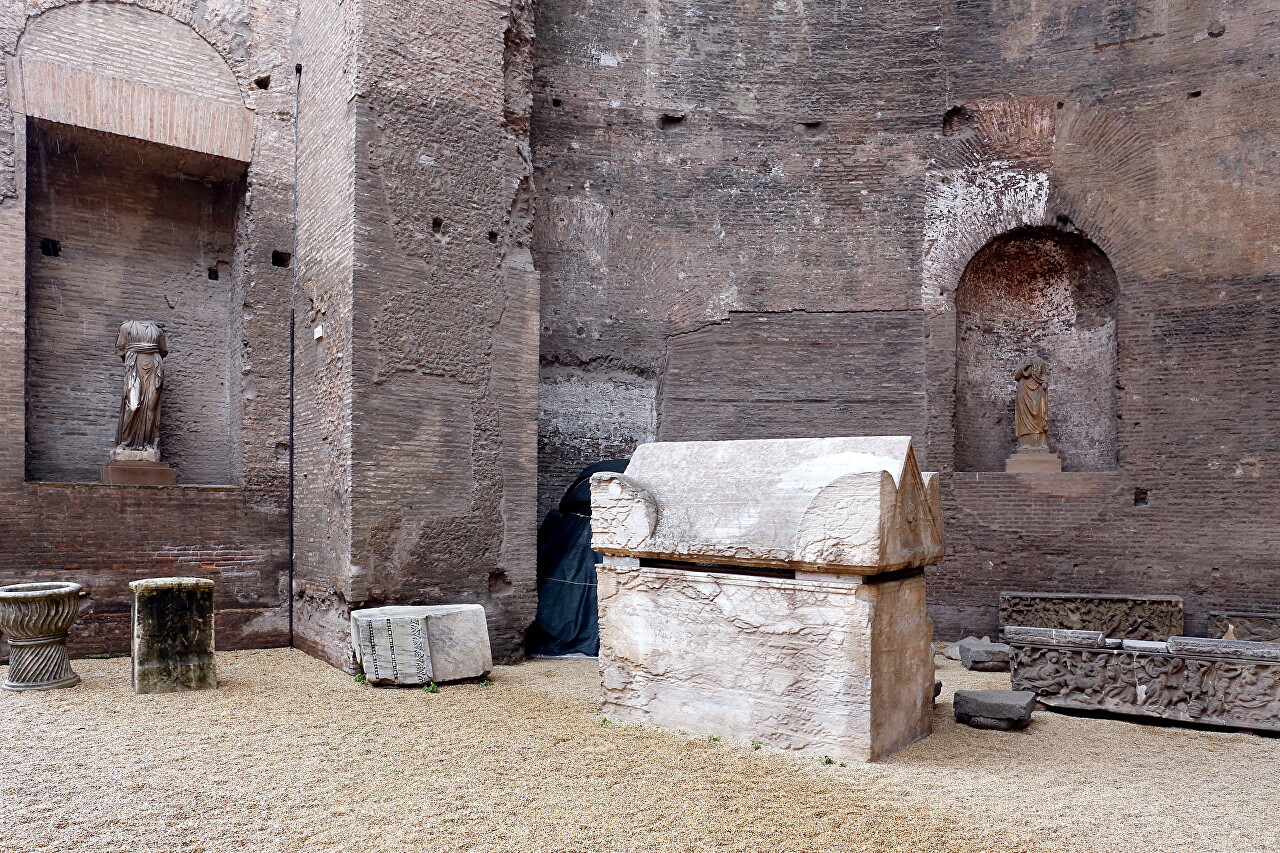
According to the Roman historian Olympidor of Thebes, Diocletian's baths could have held about three thousand people at a time, which is significantly more than the baths of Caracalla could have held, although they cover about the same area.
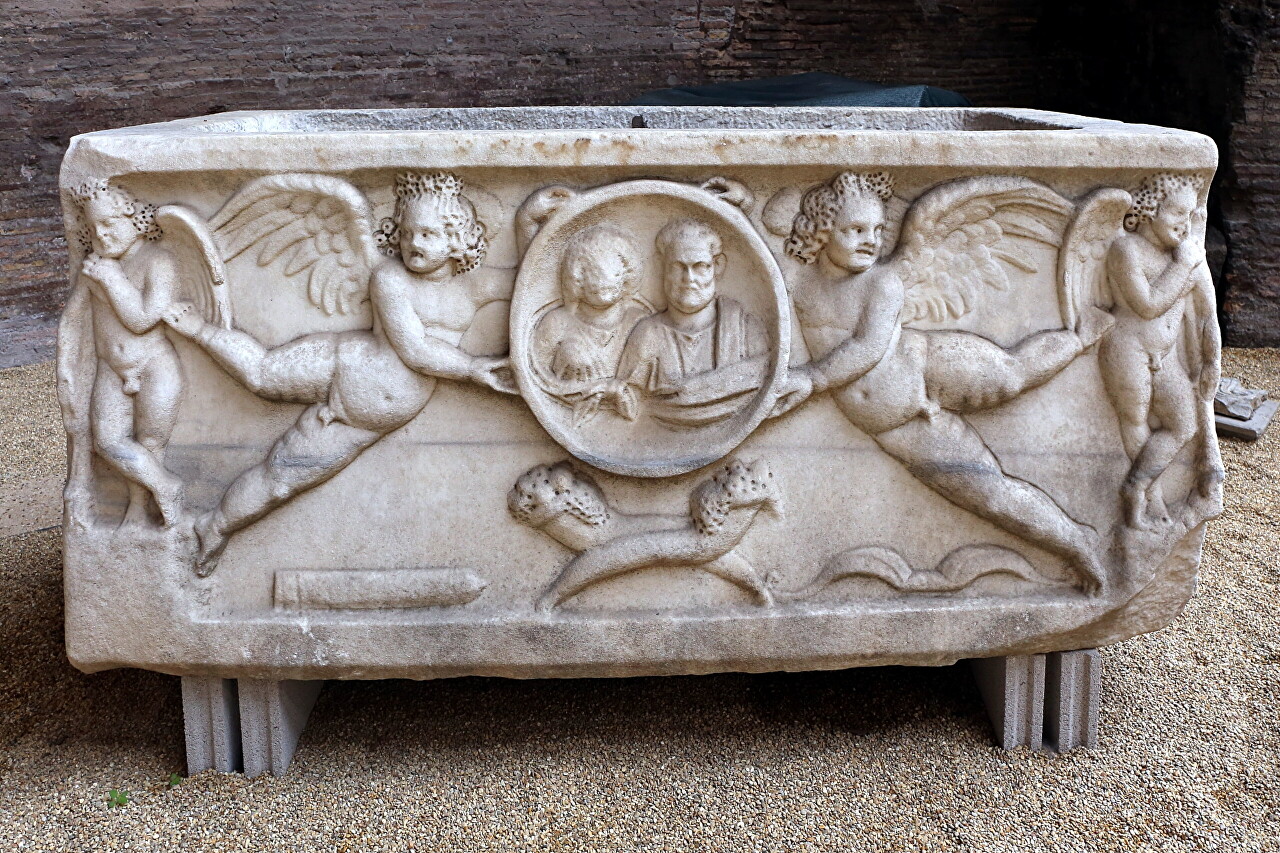
Tepidarium, "warm room", the central part of Roman baths, designed for pre-heating the body.
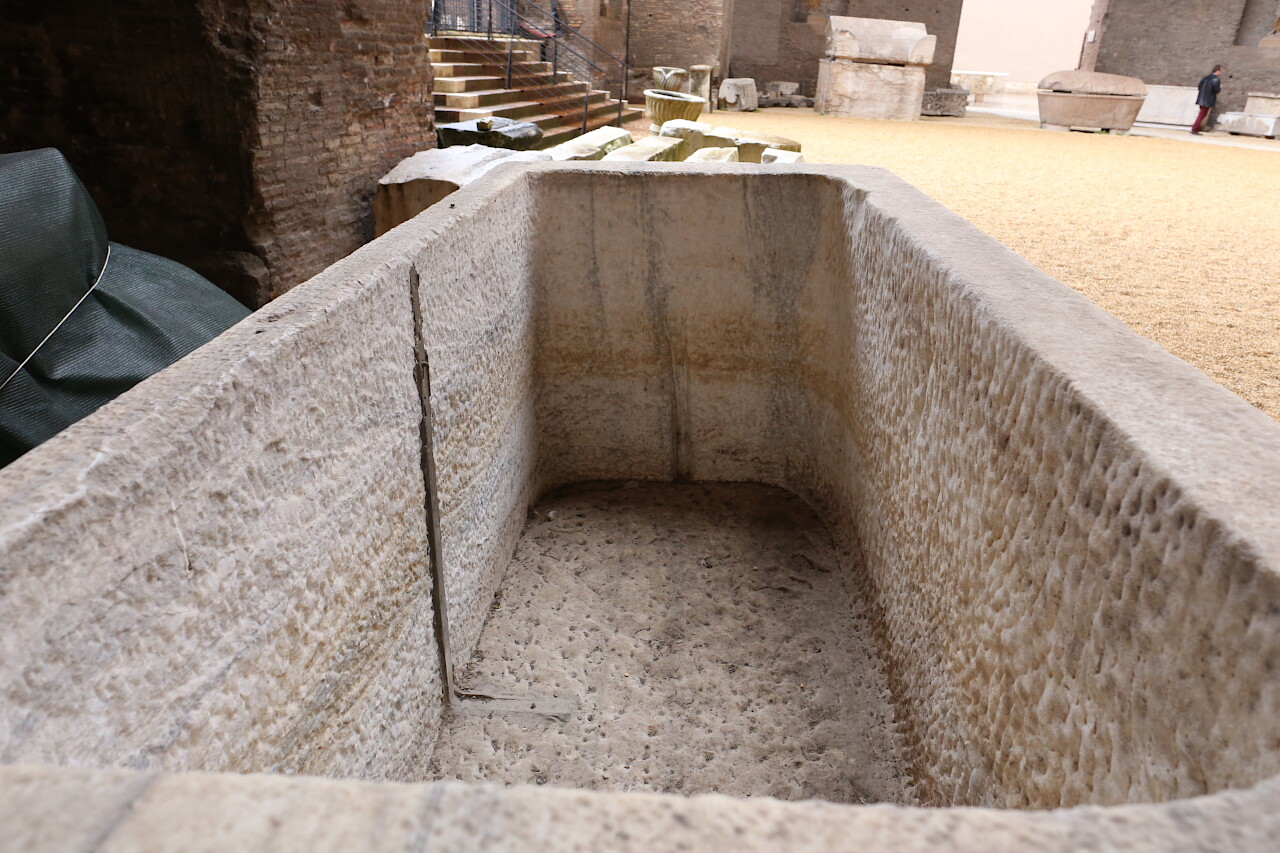
Dry air with a temperature of was heated in a furnace (hypocaust) to 40-45°C and fed through channels located in the walls and under the floor. The tepidarium was most richly decorated with marble and mosaics and decorated with statues.
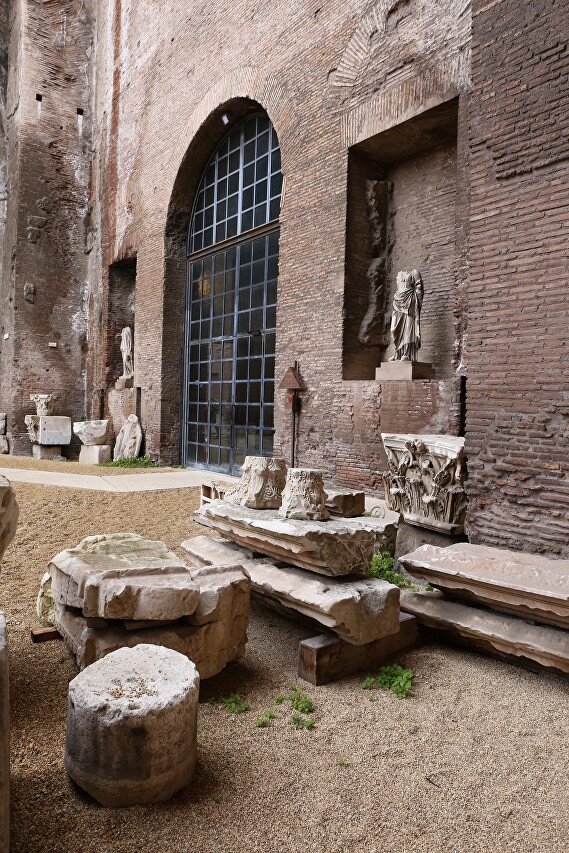
Light came from large windows located in the upper tier of the room.
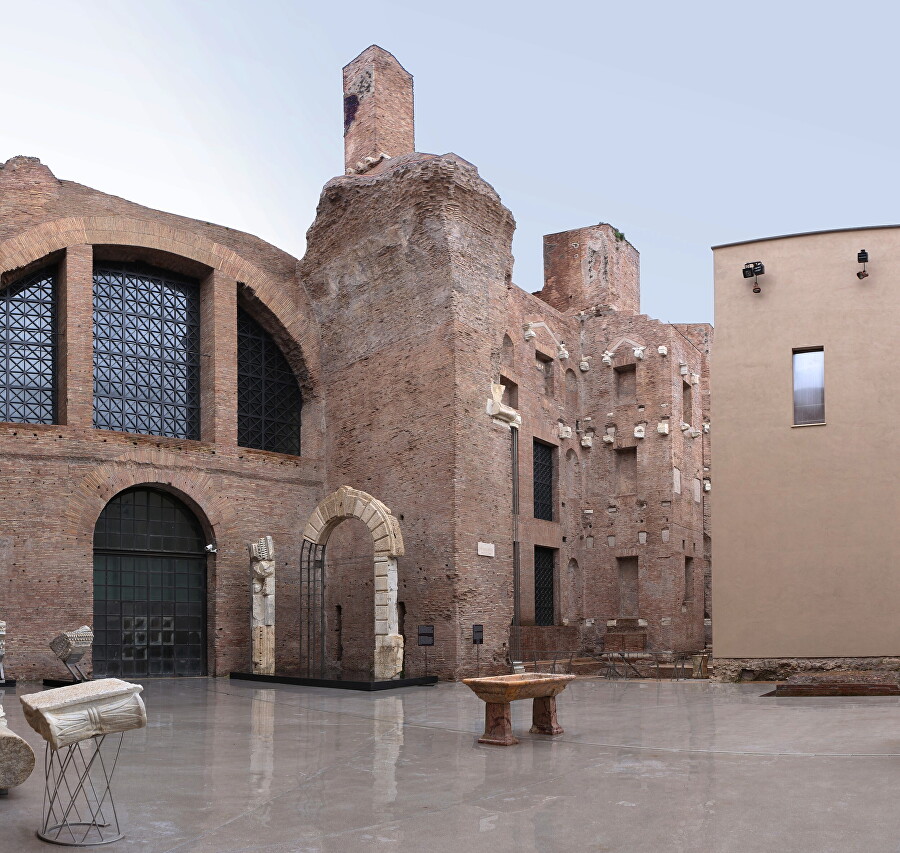
The word frigidarium comes from the Latin word frigeo, which means "cold". This hall had a large central pool and many small baths in the adjoining rooms. The frigidarium was mainly used as a cold water pool. Usually, after taking baths with hot water or after exercising in the palaestra, we went to the frigidarium, where, in addition to ablutions, we rested and communicated.
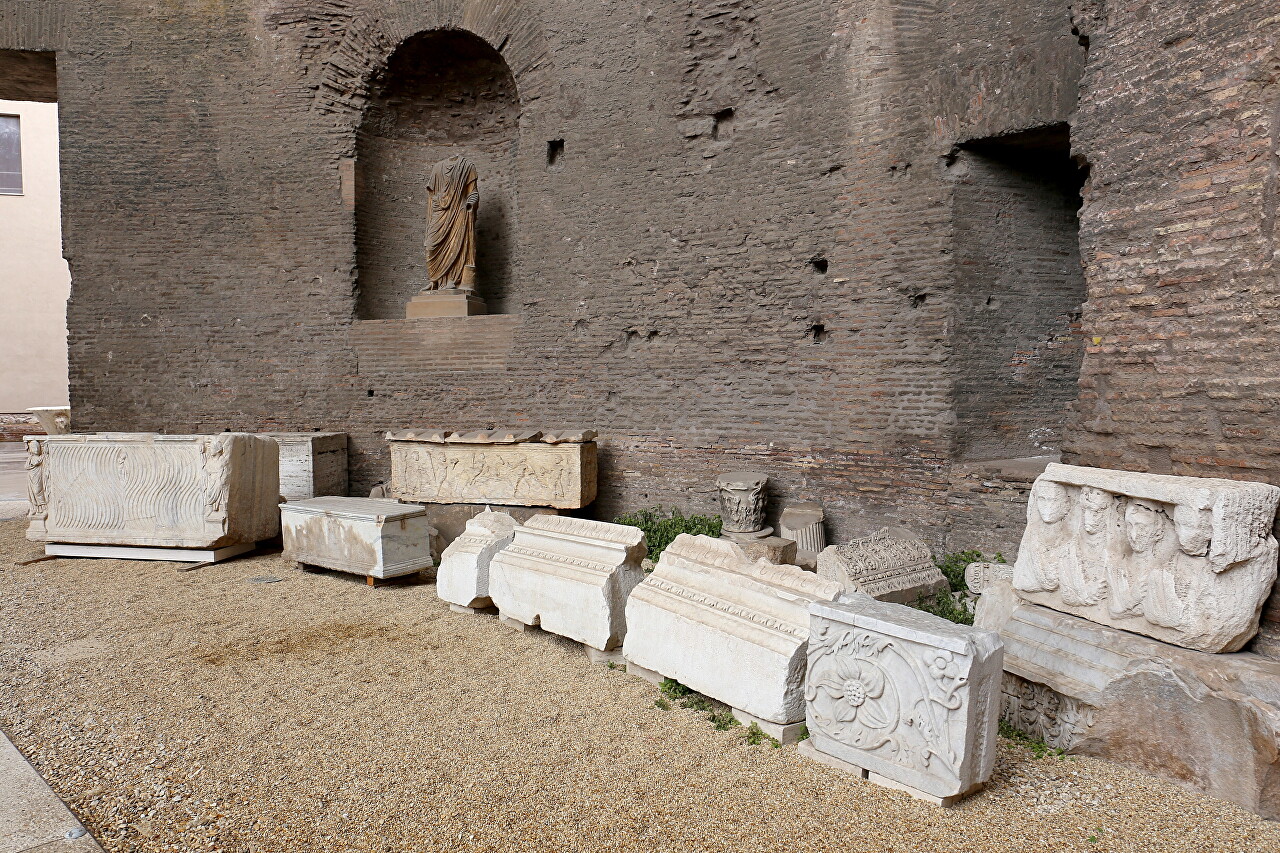
At each end of the frigidarium are large shallow pools designed for outdoor swimming. The water in the swimming pools was running and then used in public restrooms.
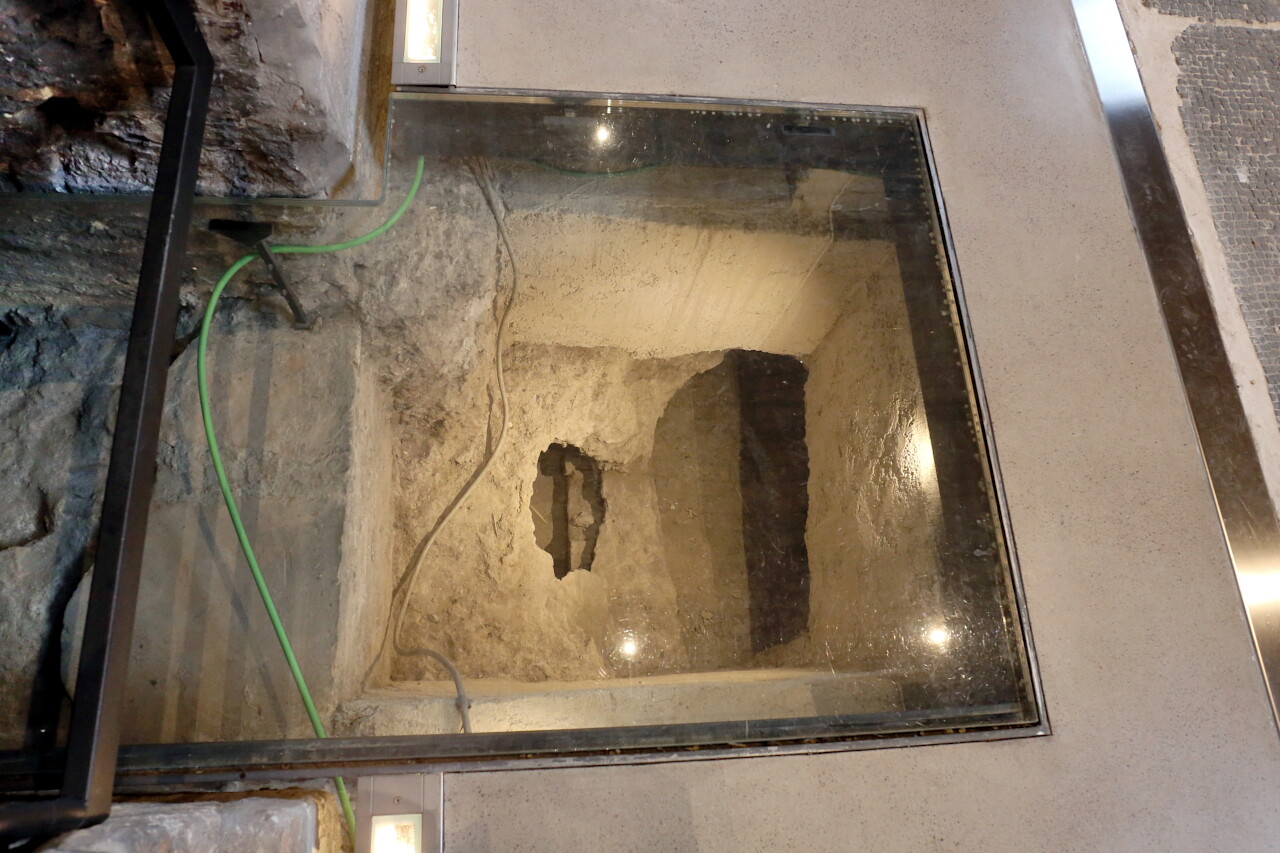
The greatest popularity of cold ablution was received at the beginning of the 4th century, due to the lack of fuel as a result of deforestation of the surrounding forests.
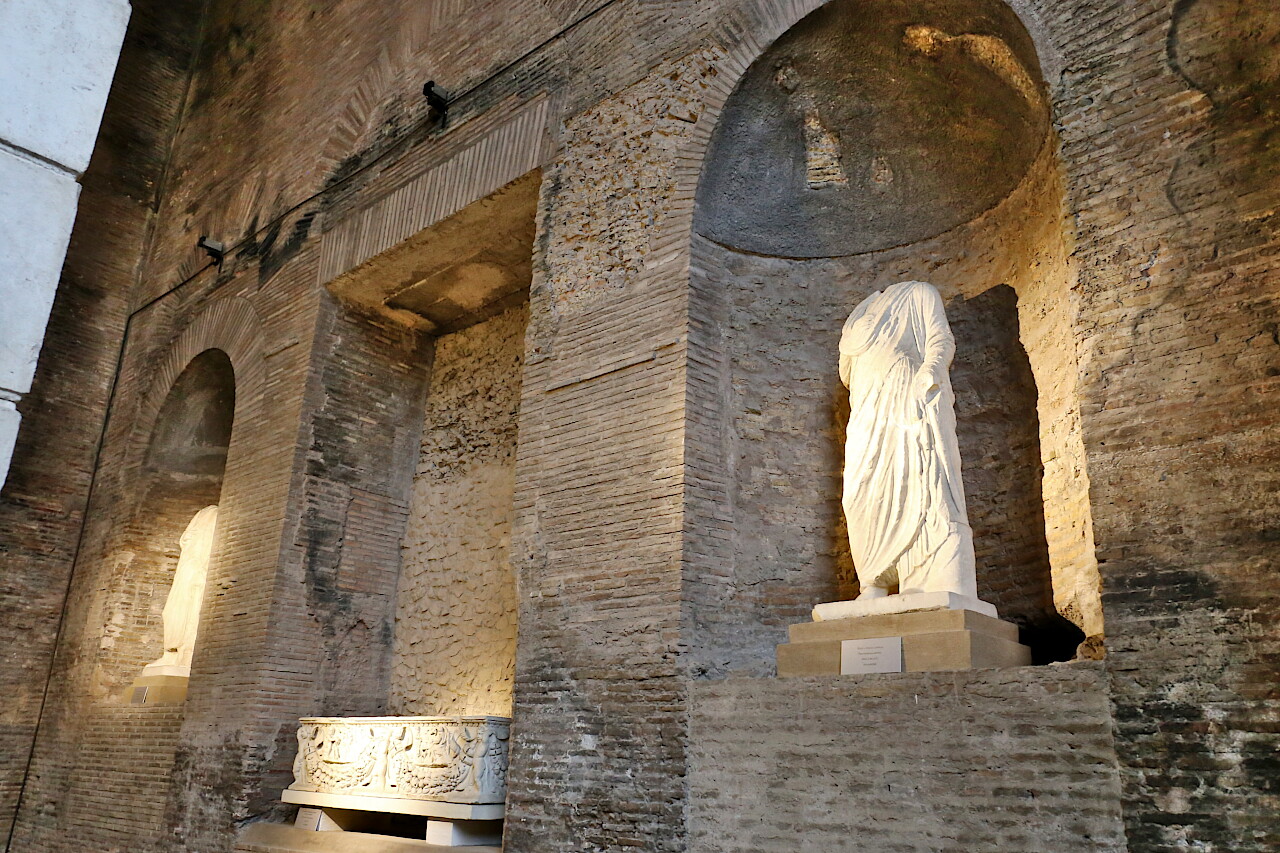
Kaldarii (Latin: caleo), "hot". This is the main bath room, where a high temperature was maintained and hot water was washed. In the baths of Diocletian, the caldarium is shaped like a basilica with a cross vault in the center and three protruding apses.
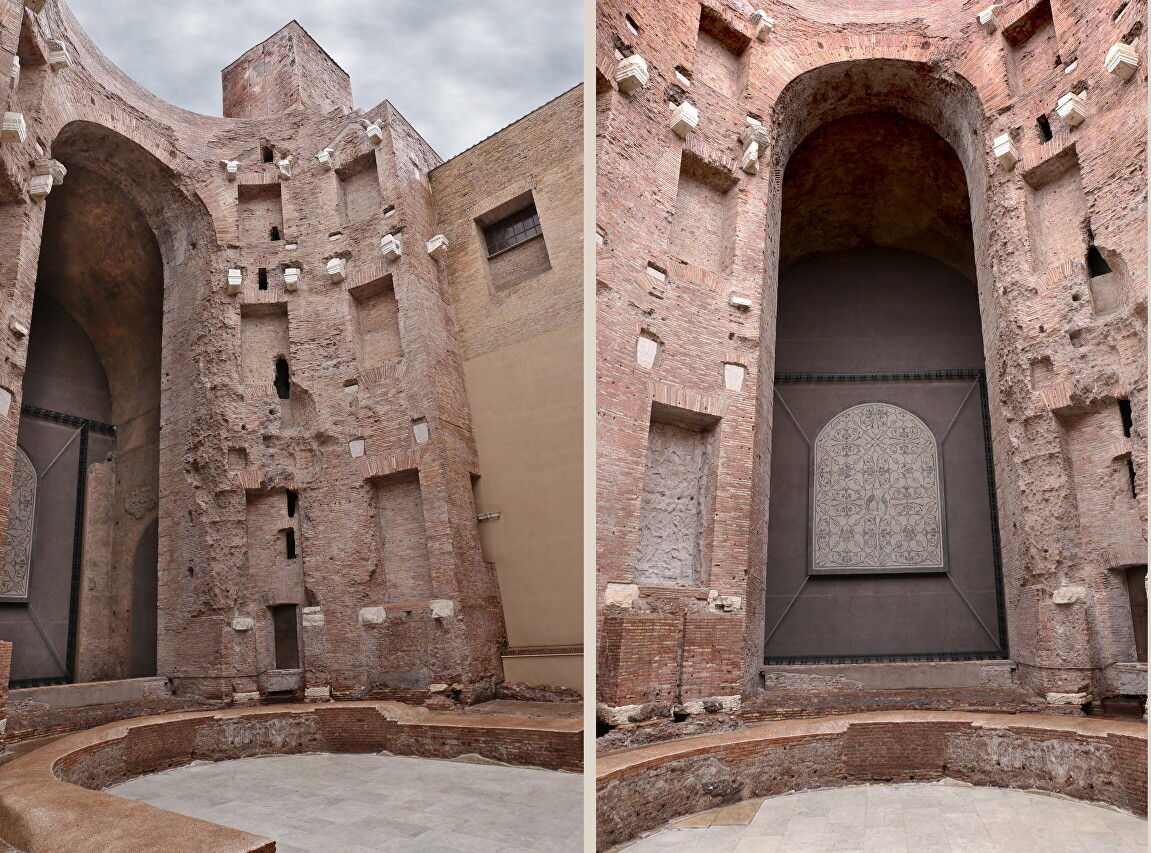
The construction of the vault using external buttresses in the frigidarium of Diocletian's Baths is considered the earliest evidence of the use of a system of struts and counter-struts in architecture. Subsequently, this technique was widely used in the construction of Gothic cathedrals.
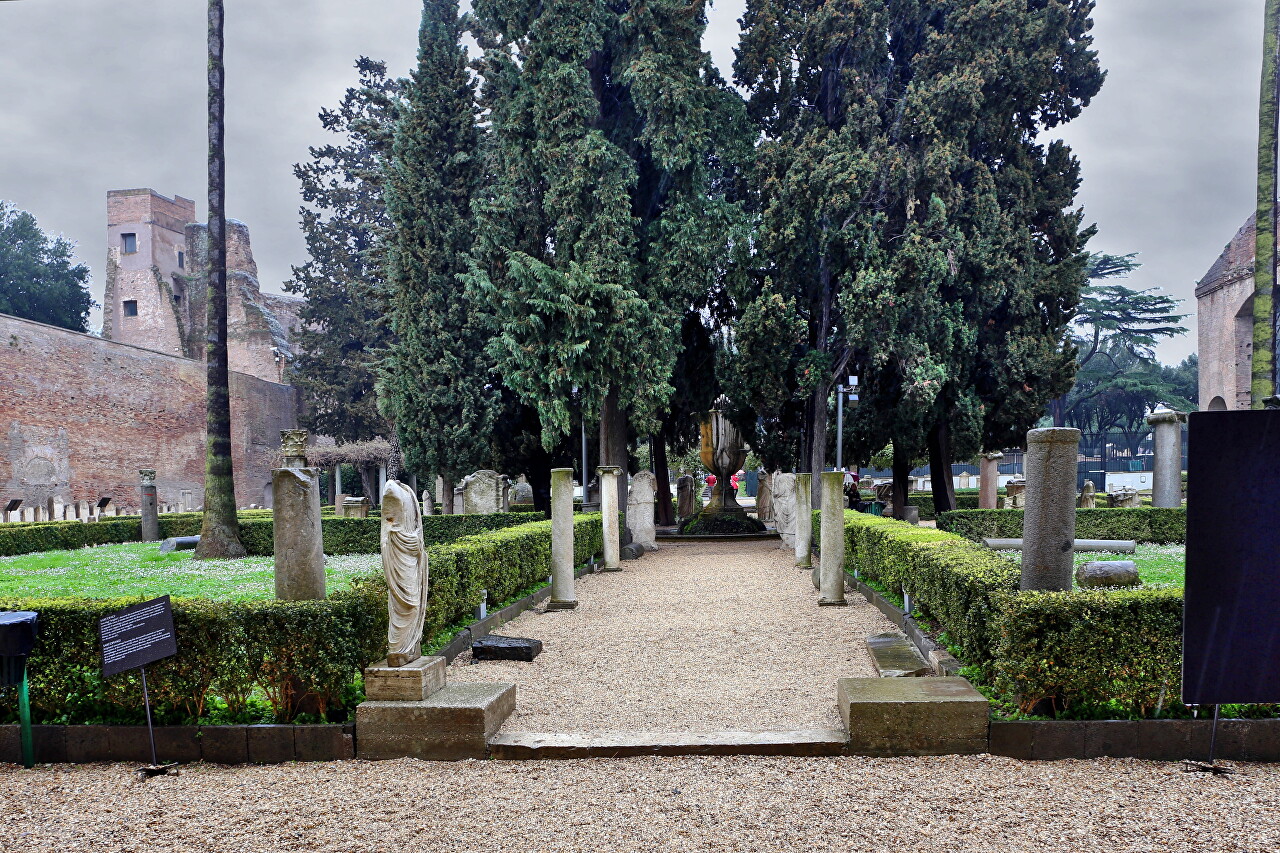
On both sides of the caldera were changing rooms (Apoditeria) and individual bathrooms owned by private clients.
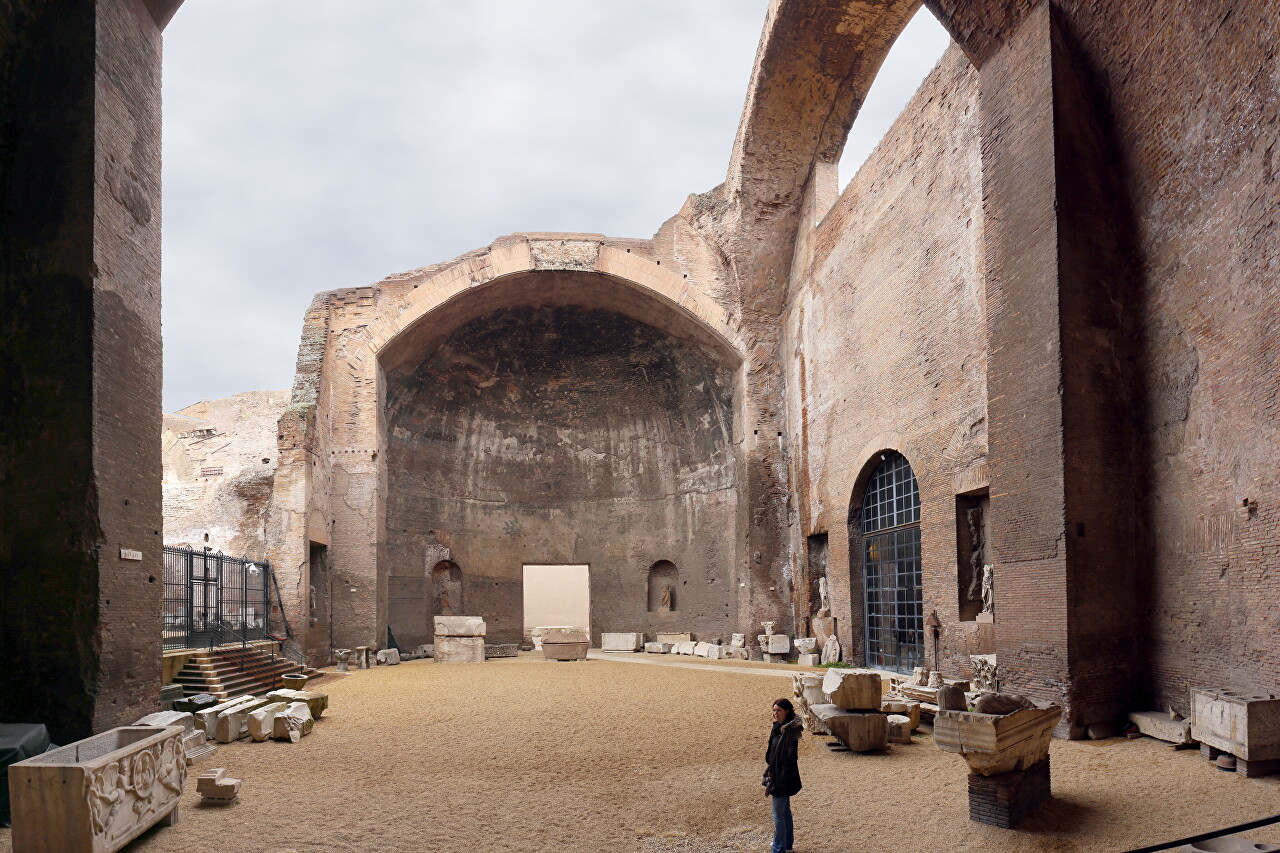
The caldarium also had a garden, recreation rooms, gyms, and small reading and lecture halls.
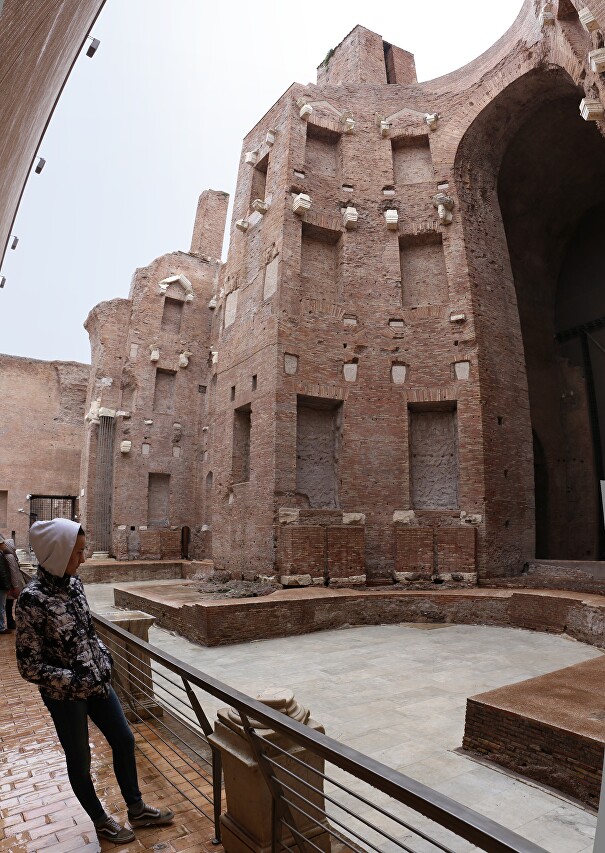
In 537, the troops of the Ostrogothic King Vitiges blocked the water supply to Rome through the aqueducts and the baths stopped working, gradually collapsing.
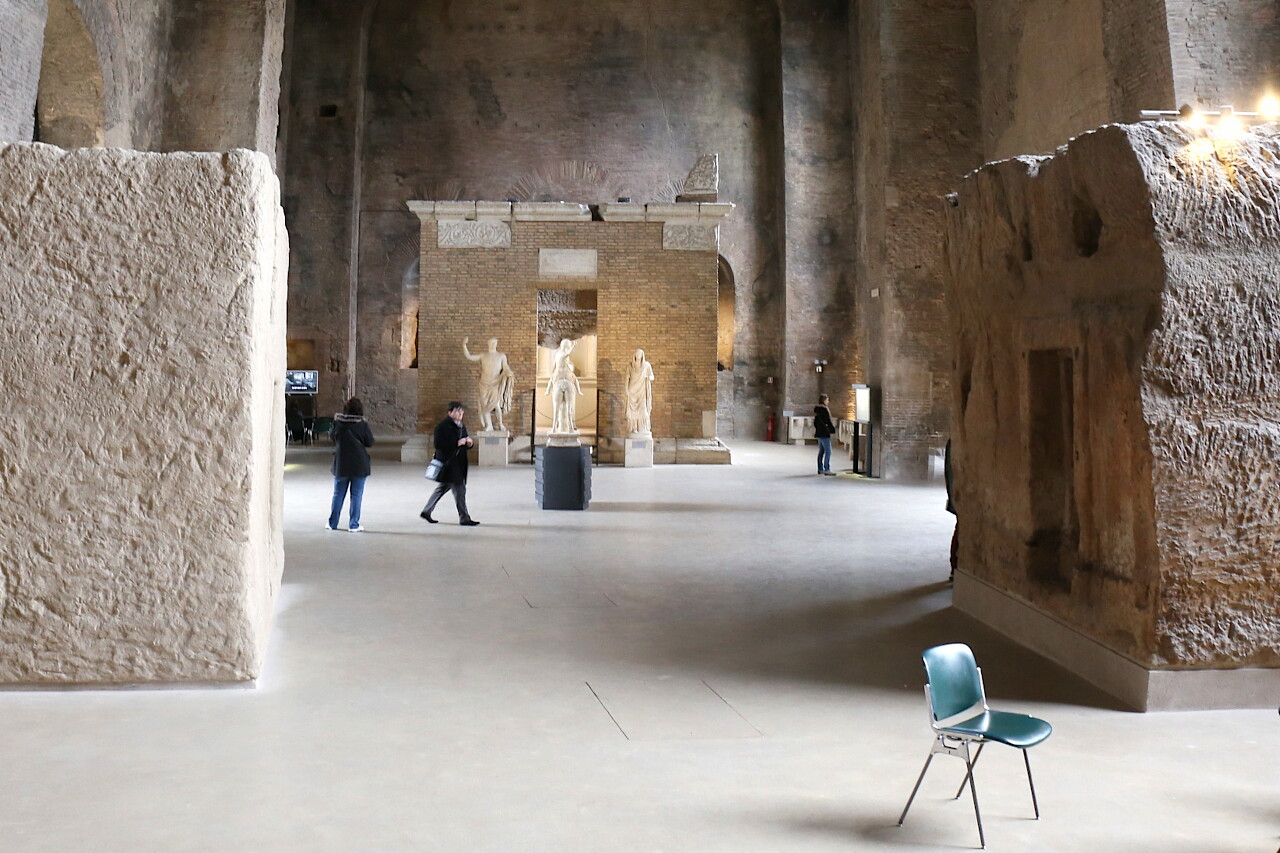
In the 16th century, the Basilica of Santa Maria degli Angeli e dei Martiri and the Church of San Bernardo alle Terme were built on the ruins of the bvla. Part of the buildings is occupied by the National Museum of Rome.
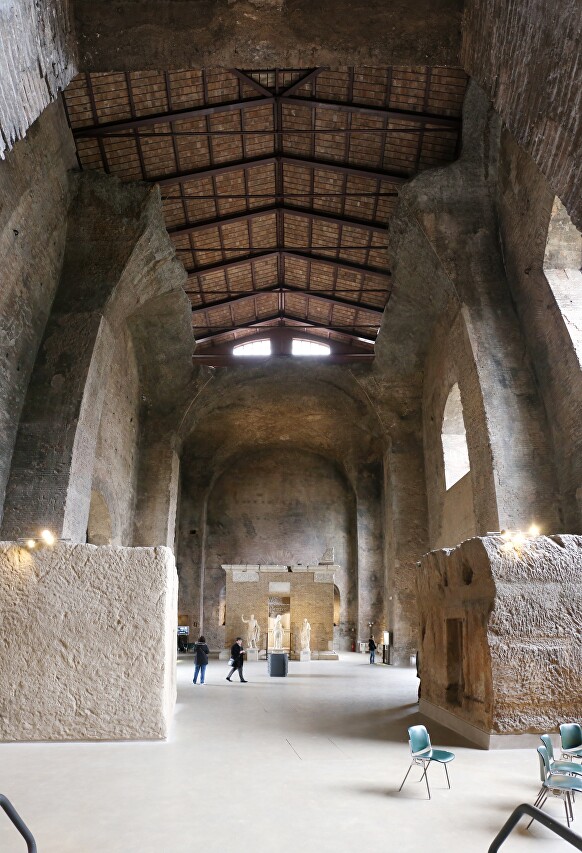
Rome's main train station is located in the immediate vicinity of the Baths of Diocletian, for which it received its name Termini.
